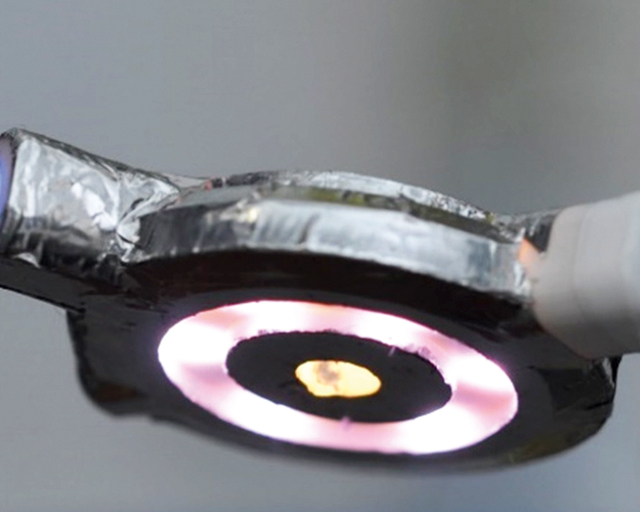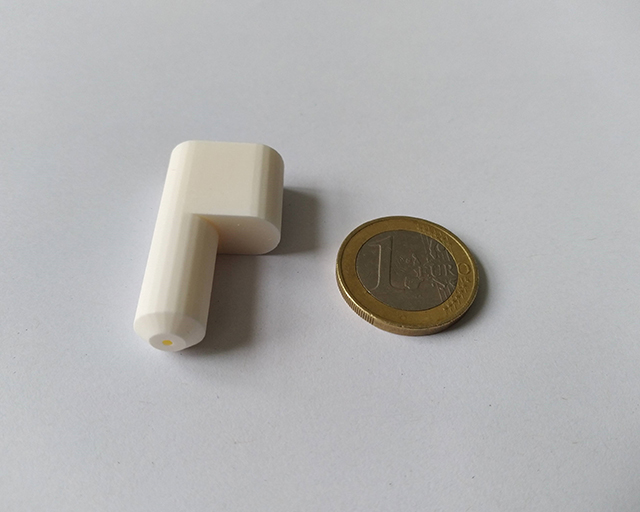
Atmospheric pressure plasma sources for additive manufacturing

Adhesion plays a essential role in additive-manufacturing processes such as fused deposition modeling (FDM), a manufacturing process in which a workpiece is built up layer by layer from a fusable plastic. It influences the stability of the printed components, the print quality and the adhesive forces between different surfaces. Through the integration of atmospheric-pressure plasma technology into additive manufacturing, it is possible to influence the interfacial chemistry and, consequently, the adhesion on the treated surfaces. As a result, subsequent processes, such as painting or bonding, can be optimized and different materials, e.g. composites and metals, can be better combined with one another. Furthermore, it also opens up new areas of application that require specific surface chemistry, for example in the field of medical implants. Applications range from the automotive industry, through the aerospace sector, and on to medical technology.

Integration of plasma sources in 3D printing
In order to be able to use atmospheric-pressure plasma sources in extrusion-based 3D printing, the sources must have a high local resolution and be relatively small and light to enable direct integration into the extruder. In addition, the control system must be adapted accordingly to ensure that simultaneous optimal and safe operation of the extruder and plasma is possible. For this, fast switching times and good electrical shielding are necessary in order to prevent interference with the printer's electronics and to ensure long-term stable and reliable operation.
Miniaturization and integration of a plasma source
At the Fraunhofer IST, two approaches are being pursued for the application of atmospheric-pressure plasma sources in additive manufacturing in order to develop customer-specific process-engineering solutions. The first approach uses miniaturized conventional plasma nozzles. A punctiform nozzle of this kind allows the structured sequential treatment of printed polymer layers in high resolution. In the second approach, annular plasma sources are being investigated, which are mounted around the extrusion nozzle and thereby allow direct treatment of the surfaces in parallel with the printing process.
Optimum adhesion through integrated plasma sources
Through the developed patented prototypes, it is possible to extend extrusion-based 3D printing processes by a parallel or sequential plasma treatment. With the aid of plasma treatment, various functions can be achieved at the interface. The possibilities range from etching and cleaning, through chemical modifications and functional coatings, and on to crosslinking of surfaces or polymers. As a result, the application areas of additive-manufacturing processes can be significantly expanded – including for sustainable materials – enabling existing products to be improved and new products to be developed.
Outlook
Future work will address the investigation of different application scenarios of plasma sources in 3D printing. The focus will hereby be on improved mechanical properties of filament-based 3D printing and multi-material composites. The utilization as a tool for ”smart repair” applications will also be researched. Furthermore, the plasma sources can be applied in many other forms of robot-guided treatment of material surfaces.
The project
The development and investigation of the plasma sources was financially supported by the Fraunhofer-Gesellschaft in the InnoPush project ”Marktflexibilität und Resilienzsteigerung durch Anlagenplattformen robotergeführter Drucktechnologien” (Market flexibility and resilience enhancement through system platforms of robot-guided printing technologies) (MaraPrint) under grant number L1FHG42421.
This article is part of the Annual Report 2021.


